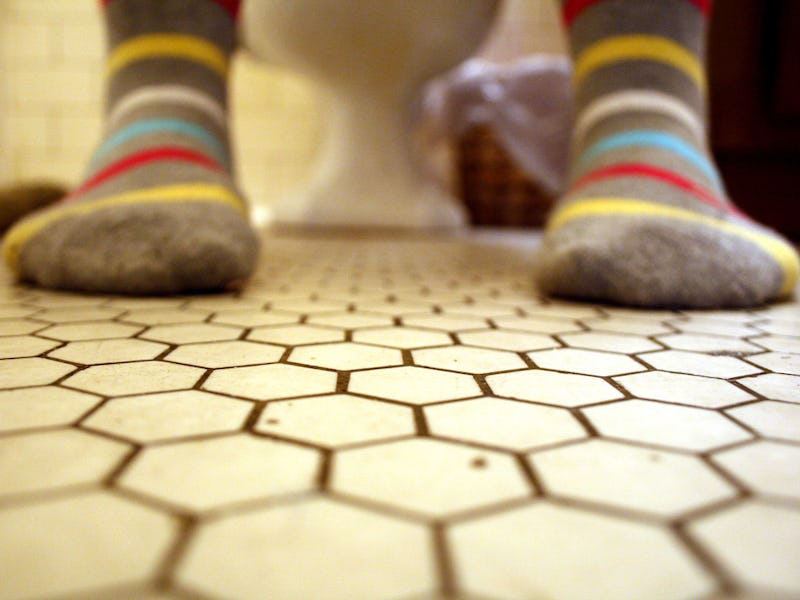
In the kingdom of public toilets, the germaphobe comes last. Though bathroom-borne bugs are mostly harmless — between 64 to 98 percent of restroom bacteria aren’t the least bit dangerous, according to a 2014 study of bacterial colonization — avoiding excreted microbes (up to 15 percent of the microbial milieu, according to the same study) is both encouraged and reasonable. So if you don’t want to stop worrying and learn to love the biome, here’s a guide to minimize your exposure to the grosser elements.
The Descent
For anyone obsessed with avoiding germs, snagging a paper towel or two en route to the bathroom is a good precaution. Consider these a one-ply shield against door handle germs with the added bonus of not leaving fingerprints.
Once inside, plan your approach: Stalls closer to the door tend to see less use. Contrary to what you may have learned from “Dodgeball,” pee is not sterile. And though urine splashback may not seem like a thing physicists would look at, you haven’t met fluid dynamics expert Randy Hurd, who determined the best urinal technique — an angle of slightly less than 45 degrees against porcelain. If you’re peeing into a toilet rather than a urinal, do it sitzpinkler-style — that is, avoid the backlash by sitting down, Hurd said. Do not fear a visibly untainted porcelain throne. Barring open wounds, the Great Wall of your ass skin will keep the bacterial hordes at bay. Plus, toilet seats are actually super clean, perhaps because we scrub what we don't understand. Kitchen sponges, on the other hand, are wretched hives of scum and bacteria — 200,000 times more microbial than toilet seats, and should be avoided at all costs.
The Flush
If your public toilet is of the auto-flush variety, that sucks from a user and environmental standpoint, but at least you don’t have to worry about a handle. If not, don’t panic: the shoe-to-lever foot flush is practiced by to two-thirds of Americans (depending on who you ask). Scientists have found that much of the bacteria on flush handles is typically associated with shoes. Otherwise, another paper towel might come in handy.
The Wash
We come to the literal rub, the crux of this delicate operation that will make or break your stay in chez crapper: Washing your hands. Members of the American Society for Microbiology, who continue to regularly publish new studies about how filthy the average American is, reported in 2010 that 20 percent of New York commuters in Grand Central Terminal or Pennsylvania Station bathrooms didn't wash their hands. The CDC recommends 20 seconds of soapy scrubbing, which they point out is enough time to hum "Happy Birthday" twice and help you on your journey to become that weirdo who sings to his nails.
So, yes, please wash your hands unless you just peed and it was a flawless or handless procedure. Don't wash them if you haven't touched anything that isn't, well, you.
The Escape
Dry your hands with a paper towel — high-powered air dryers, a 2014 study indicated, aerosolizes bacteria into a germ cloud 27 times richer with bugs than the air near towel dispensers. There’s also evidence that the friction of the paper towel against skin plays a key role in hand hygiene.
Exit with a well-placed paper towel or elbow to the door — never your hand — and breathe the deep, satisfied sigh of the germaphobe leaving the bathroom.